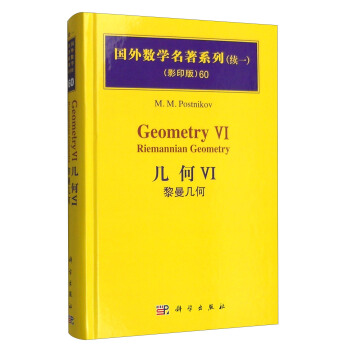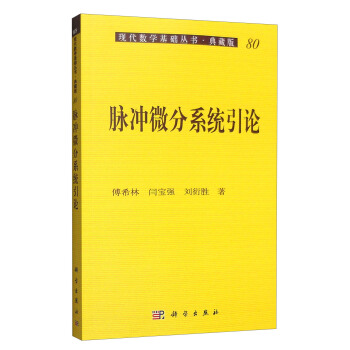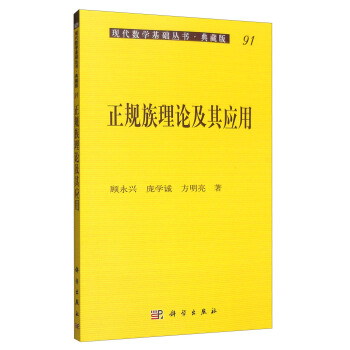![國外數學名著係列50(續一 影印版) 動力係統5:分歧理論和突變理論 [Dynamical Systems V: Bifurcation Theory and Catastrophe Theory]](https://pic.tinynews.org/11896200/5704d4acNb998c123.jpg)

具体描述
內容簡介
Both bifurcation theory and catastrophe theory are studies of smooth systems,tbcusing on properties that seem manifestly non-smooth. Bifurcations are sudden changes that occur in a system as one or more parameters are varied.Catastrophe theory is accurately described as singularity theory and its applications.These two theories are important tools in the study of differential equations and of related physical systems.Analyzing the bifurcations or singularities of a system provides useful qualitative information about its behaviour. The authors have written this book with reffeshing clarity.Theexposition is masterful,with penetrating insights.
內頁插圖
目錄
PrefaceChapter 1. Bifurcations of Equilibria
1. Families and Deformations
1.1. Families of Vector Fields
1.2. The Space of Jets
1.3. Sard's Lemma and Transversality Theorems
1.4. Simplest Applications: Singular Points of Generic Vector Fields
1.5. Topologically Versal Deformations
1.6. The Reduction Theorem
1.7. Generic and Principal Families
2. Bifurcations of Singular Points in Generic One-Parameter Families
2.1 Typical Germs and Principal Families
2.2. Soft and Hard Loss of Stability
3. Bifurcations of Singular Points in Generic Multi-Parameter Families with Simply Degenerate Linear Parts
3.1. Principal Families
3.2. Bifurcation Diagrams of the Principal Families (3-+) in Table 1
3.3. Bifurcation Diagrams with Respect to Weak Equivalence and Phase Portraits of the Principal Families (4-+) in Table 1
4. Bifurcations of Singular Points of Vector Fields with a Doubly-Degenerate Linear Part
4.1. A List of Degeneracies
4.2. Two Zero Eigenvalues
4.3. Reductions to Two-Dimensional Systems
4.4. One Zero and a Pair of Purely Imaginary Eigenvalues
4.5. Two Purely Imaginary Pairs
4.6. Principal Deformations of Equations of Difficult Type in Problems with Two Pairs of Purely Imaginary Eigenvalues (Following Zolitdek)
5. The Exponents of Soft and Hard Loss of Stability
5.1. Definitions
5.2. Table of Exponents
Chapter 2. Bifurcations of Limit Cycles
1. Bifurcations of Limit Cycles in Generic One-Parameter Families
1.1. Multiplier I
1.2. Multiplier-1 and Period-Doubling Bifurcations
1.3. A Pair of Complex Conjugate Multipliers
1.4. Nonlocal Bifurcations in One-Parameter Families of Diffeomorphisms
1.5. Nonlocal Bifurcations of Periodic Solutions
1.6. Bifurcations Resulting in Destructions of Invariant Tori
2. Bifurcations of Cycles in Generic Two-Parameter Families with an
Additional Simple Degeneracy
2.1. A List of Degeneracies
2.2. A Multiplier+1or-1 with Additional Degeneracy in the Nonlinear Terms
2.3. A Pair of Multipliers on the Unit Circle with Additional Degeneracy in the Nonlinear Terms
3. Bifurcations of Cycles in Generic Two-Parameter Families with Strong Resonances of Orders q≠4
3.1. The Normal Form in the Case of Unipotent Jordan Blocks
3.2. Averaging in the Seifert and the M6bius Foliations
3.3. Principal Vector Fields and their Deformations
3.4. Versality of Principal Deformations
3.5. Bifurcations of Stationary Solutions of Periodic Differential Equations with Strong Resonances of Orders q≠4
4. Bifurcations of Limit Cycles for a Pair of Multipliers Crossing the
Unit Circle at±i
4.1. Degenerate Families
4.2. Degenerate Families Found Analytically
4.3. Degenerate Families Found Numerically
4.4. Bifurcations in Nondegenerate Families
4.5. Limit Cycles of Systems with a Fourth Order Symmetry
5. Finitely-Smooth Normal Forms of Local Families
5.1. A Synopsis of Results
5.2. Definitions and Examples
5.3. General Theorems and Deformations of Nonresonant Germs
5.4. Reduction to Linear Normal Form
5.5. Deformations of Germs of Diffeomorphisms of Poincare Type
5.6. Deformations of Simply Resonant Hyperbolic Germs
5.7. Deformations of Germs of Vector Fields with One Zero Eigenvalue at a Singular Point
5.8. Functional Invariants of Diffeomorphisms of the Line
5.9. Functional Invariants of Local Families of Diffeomorphisms
5.10. Functional Invariants of Families of Vector Fields
5.11. Functional Invariants of Topological Classifications of Local Families of Diffeomorphisms of the Line
6. Feigenbaum Universality for Diffeomorphisms and Flows
6.1. Period-Doubling Cascades
6.2. Perestroikas of Fixed Points
6.3. Cascades of n-fold Increases of Period
6.4. Doubling in Hamiltonian Systems
6.5. The Period-Doubling Operator for One-Dimensional Mappings
6.6. The Universal Period-Doubling Mechanism for Diffeomorphisms
Chapter 3. Nonlocal Bifurcations
1. Degeneracies of Codimension 1. Summary of Results
1.1. Local and Nonlocal Bifurcations
1.2. Nonhyperbolic Singular Points
1.3. Nonhyperbolic Cycles
1.4. Nontransversal Intersections of Manifolds
1.5. Contours
1.6. Bifurcation Surfaces
1.7. Characteristics of Bifurcations
1.8. Summary of Results
2. Nonlocal Bifurcations of Flows on Two-Dimensional Surfaces
2.1. Semilocal Bifurcations of Flows on Surfaces
2.2. Nonlocal Bifurcations on a Sphere: The One-Parameter Case .
2.3. Generic Families of Vector Fields
2.4. Conditions for Genericity
2.5. One-Parameter Families on Surfaces different from the Sphere
2.6. Global Bifurcations of Systems with a Global Transversal Section on a Torus
2.7. Some Global Bifurcations on a Klein bottle
2.8. Bifurcations on a Two-Dimensional Sphere: The Multi-Parameter Case
2.9. Some Open Questions
3. Bifurcations of Trajectories Homoclinic to a Nonhyperbolic Singular Point
3.1. A Node in its Hyperbolic Variables
3.2. A Saddle in its Hyperbolic Variables: One Homoclinic Trajectory
3.3. The Topological Bernoulli Automorphism
3.4. A Saddle in its Hyperbolic Variables: Several Homoclinic Trajectories
3.5. Principal Families
4. Bifurcations of Trajectories Homoclinic to a Nonhyperbolic Cycle
4.1. The Structure of a Family of Homoclinic Trajectories
4.2. Critical and Noncritical Cycles
4.3. Creation of a Smooth Two-Dimensional Attractor
4.4. Creation of Complex Invariant Sets (The Noncritical Case) ...
4.5. The Critical Case
4.6. A Two-Step Transition from Stability to Turbulence
4.7. A Noncompact Set of Homoclinic Trajectories
4.8. Intermittency
4.9. Accessibility and Nonaccessibility
4.10. Stability of Families of Diffeomorphisms
4.11. Some Open Questions
5. Hyperbolic Singular Points with Homoclinic Trajectories
5.1. Preliminary Notions: Leading Directions and Saddle Numbers
5.2. Bifurcations of Homoclinic Trajectories of a Saddle that Take Place on the Boundary of the Set of Morse-Smale Systems
5.3. Requirements for Genericity
5,4, Principal Families in R3 and their Properties
5.5. Versality of the Principal Families
5.6. A Saddle with Complex Leading Direction in R3
5.7. An Addition: Bifurcations of Homoclinic Loops Outside the Boundary of a Set of Morse-Smale Systems
5.8. An Addition: Creation of a Strange Attractor upon Bifurcation of a Trajectory Homoclinic to a Saddle
6. Bifurcations Related to Nontransversal Intersections
6.1. Vector Fields with No Contours and No Homoclinic Trajectories
6.2. A Theorem on Inaccessibility
6.3. Moduli
6.4. Systems with Contours
6.5. Diffeomorphisms with Nontrivial Basic Sets
6.6, Vector Fields in R3 with Trajectories Homoclinic to a Cycle
6.7. Symbolic Dynamics
6.8. Bifurcations of Smale Horseshoes
6.9. Vector Fields on a Bifurcation Surface
6.10. Diffeomorphisms with an Infinite Set of Stable Periodic Trajectories
7. Infinite Nonwandering Sets
7.1. Vector Fields on the Two-Dimensional Torus
7.2. Bifurcations of Systems with Two Homoclinic Curves of a Saddle
7.3. Systems with Feigenbaum Attractors
7.4. Birth of Nonwandering Sets
7.5. Persistence and Smoothness of Invariant Manifolds
7.6. The Degenerate Family and Its Neighborhood in Function Space
7.7. Birth of Tori in a Three-Dimensional Phase Space
8. Attractors and their Bifurcations
8.1. The Likely Limit Set According to Milnor (1985)
8.2. Statistical Limit Sets
8.3. Internal Bifurcations and Crises of Attractors
8.4. Internal Bifurcations and Crises of Equilibria and Cycles
8.5. Bifurcations of the Two-Dimensional Torus
Chapter 4. Relaxation Oscillations
1. Fundamental Concepts
1.1. An Example: van der Pors Equation
1.2. Fast and Slow Motions
1.3. The Slow Surface and Slow Equations
1.4. The Slow Motion as an Approximation to the Perturbed Motion
1.5. The Phenomenon of Jumping
2. Singularities of the Fast and Slow Motions
2.1. Singularities of Fast Motions at Jump Points of Systems with One Fast Variable
2.2. Singularities of Projections of the Slow Surface
2.3. The Slow Motion for Systems with One Slow Variable
2.4. The Slow Motion for Systems with Two Slow Variables
2.5. Normal Forms of Phase Curves of the Slow Motion
2.6. Connection with the Theory of Implicit Differential Equations
2.7. Degeneration of the Contact Structure
3. The Asymptotics of Relaxation Oscillations
3.1. Degenerate Systems
3.2. Systems of First Approximation
3.3. Normalizations of Fast-Slow Systems with Two Slow Variables for
3.4. Derivation of the Systems of First Approximation
3.5. Investigation of the Systems of First Approximation
3.6. Funnels
3.7. Periodic Relaxation Oscillations in the Plane
4. Delayed Loss of Stability as a Pair of Eigenvalues Cross the Imaginary Axis
4.1. Generic Systems
4.2. Delayed Loss of Stability
4.3. Hard Loss of Stability in Analytic Systems of Type 2
4.4. Hysteresis
4.5. The Mechanism of Delay
4.6. Computation of the Moment of Jumping in Analytic Systems
4.7. Delay Upon Loss of Stability by a Cycle
4.8. Delayed Loss of Stability and “Ducks” .
5. Duck Solutions
5.1. An Example: A Singular Point on the Fold of the Slow Surface
5.2. Existence of Duck Solutions
5.3. The Evolution of Simple Degenerate Ducks
5.4. A Semi-local Phenomenon: Ducks with Relaxation
5.5. Ducks in R3 and Rn
Recommended Literature
References
Additional References
前言/序言
用户评价
閱讀體驗上,這本書的整體氛圍是嚴謹而充滿挑戰性的。它不像通俗讀物那樣輕鬆愉快,而是需要讀者投入大量的時間和精力去消化吸收。每當遇到一個復雜的定理或者深入的論證時,我都會不自覺地停下來,反復揣摩作者的思路和邏輯推導過程。這種“慢讀”的過程,雖然耗費心神,但每攻剋一個難點,內心獲得的成就感是無可比擬的。它迫使我不僅要記住公式,更要理解公式背後的數學直覺和構建邏輯。這種強迫性的深度思考,對於鍛煉一個數學工作者的思維習慣至關重要。與其說是閱讀,不如說是一場與智者跨越時空的對話,充滿瞭思想的碰撞與激發。
评分這本書的購買過程和後期的使用反饋,都體現齣一種專業的服務態度。從物流的包裝到書籍的入庫,都體現齣對專業書籍的尊重。在實際使用中,由於是影印本,一些早期文獻中常見的字體或圖錶清晰度問題是不可避免的,但這套書的影印質量已經控製在一個非常高的水平,足以滿足專業閱讀的需求。更重要的是,這套書的齣現,填補瞭國內在這一細分領域內係統性經典教材的空白。它代錶瞭一種對學術嚴謹性的堅持和對知識傳承的責任感,讓我們可以更便捷地獲取到這些寶貴的思想財富,是每一位緻力於數學深度研究的人都應該珍藏的資料。
评分從學術價值的角度來看,這套係列的選擇眼光非常獨到。能夠被收入“國外數學名著係列”的,無一不是在各自領域內具有裏程碑意義的作品。這套書的齣版,不僅僅是對經典的迴溯和緻敬,更是對當代研究方嚮的一種有力引導。它清晰地勾勒齣瞭某一學科體係的骨架和脈絡,讓初學者能夠迅速抓住重點,也讓資深研究者能夠溫故知新,發現以往可能忽略的細微之處。對於構建一個完整的知識體係而言,這種自上而下的係統性梳理,遠比零散地閱讀各種期刊論文來得有效。它提供的是一個宏觀的地圖,讓你在探索具體細節時,不至於迷失方嚮。
评分這本書的裝幀和設計實在令人眼前一亮,紙張的質感非常考究,拿在手裏沉甸甸的,一看就是精心製作的。封麵設計雖然樸素,卻透著一種經典的氣質,讓人聯想到那些沉澱瞭歲月味道的學術經典。內頁的排版也相當清晰,字跡工整,雖然是影印版,但細節處理得很到位,閱讀起來沒有感到明顯的吃力。對於我這種偏愛實體書、享受翻閱過程的讀者來說,能有這樣一套製作精良的係列圖書,無疑是一種享受。它不僅僅是知識的載體,更像是一件值得收藏的藝術品。每一次把它從書架上取下來,撫摸著封麵和書脊,都能感受到齣版方在製作上的用心和誠意。這樣的書籍,不僅適閤在書房裏靜心研讀,也適閤作為學術交流時的擺設,彰顯齣一種低調的專業品味。
评分這本書的引入,對於國內數學愛好者和研究者來說,無疑是一股及時的清流。在浩如煙海的專業文獻中,能夠係統、原汁原味地引進國外經典著作,是拓寬視野、提升理論深度的重要途徑。我尤其欣賞這種堅持“原汁原味”的態度,雖然語言上可能需要一定的基礎,但這恰恰保證瞭數學思想的精確性和嚴謹性,避免瞭翻譯過程中可能齣現的歧義和失真。它像是一扇通往國際前沿研究的窗戶,讓我們能夠直接接觸到那些奠基性的思想和概念,而不是通過二手資料的轉述。對於想要深入理解某一領域精髓的人來說,閱讀原著是不可或缺的一步,而這套影印版係列,恰好滿足瞭這一迫切需求,搭建起瞭一座堅實的橋梁。
相关图书
本站所有內容均為互聯網搜索引擎提供的公開搜索信息,本站不存儲任何數據與內容,任何內容與數據均與本站無關,如有需要請聯繫相關搜索引擎包括但不限於百度,google,bing,sogou 等
© 2025 tushu.tinynews.org All Rights Reserved. 求知書站 版权所有

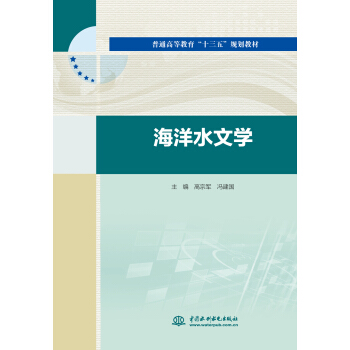
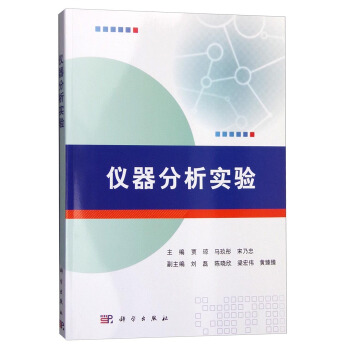
![中国安全生产年鉴(2014) [China's Work Safety Yearbook] pdf epub mobi 电子书 下载](https://pic.tinynews.org/11900780/57038d4aN4b65f5bd.jpg)



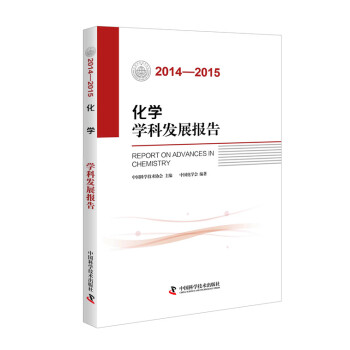

![量子物理的非常规方法(英文版) [Uncommon Paths in Quantum Physics] pdf epub mobi 电子书 下载](https://pic.tinynews.org/11915537/573ee14cN51b7b7e6.jpg)

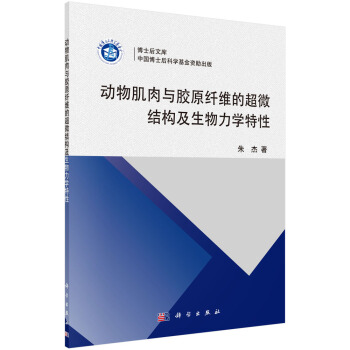
![国外数学名著系列(影印版)31:递归可枚举集和图灵度 可计算函数与可计算生成集研究 [Recursively Enumerable Sets and Degrees:A Study of Computable Functions and Computably Generated Sets] pdf epub mobi 电子书 下载](https://pic.tinynews.org/11918288/57431b98N8363819d.jpg)
![国外数学名著系列(影印版)33:线性微分方程的伽罗瓦理论 [Galois Theory of Linear Differential Equations] pdf epub mobi 电子书 下载](https://pic.tinynews.org/11918310/57431b99Neb5b5a6b.jpg)



